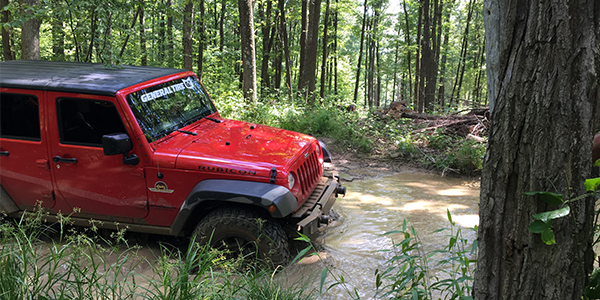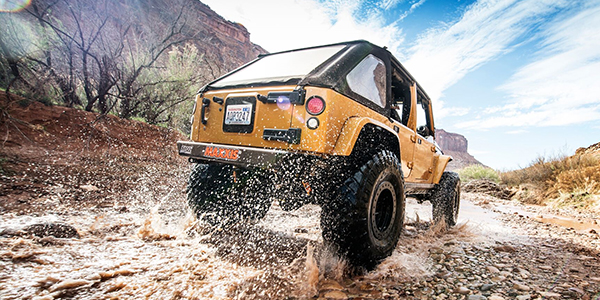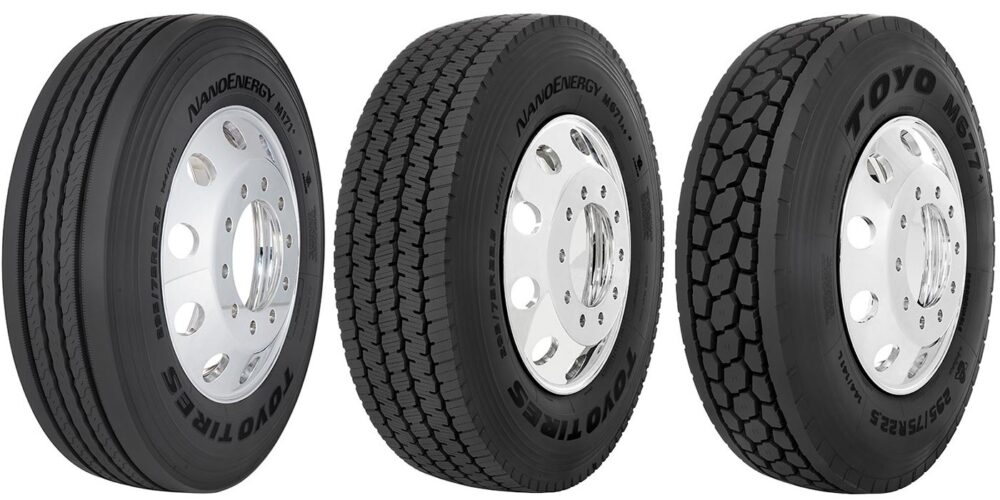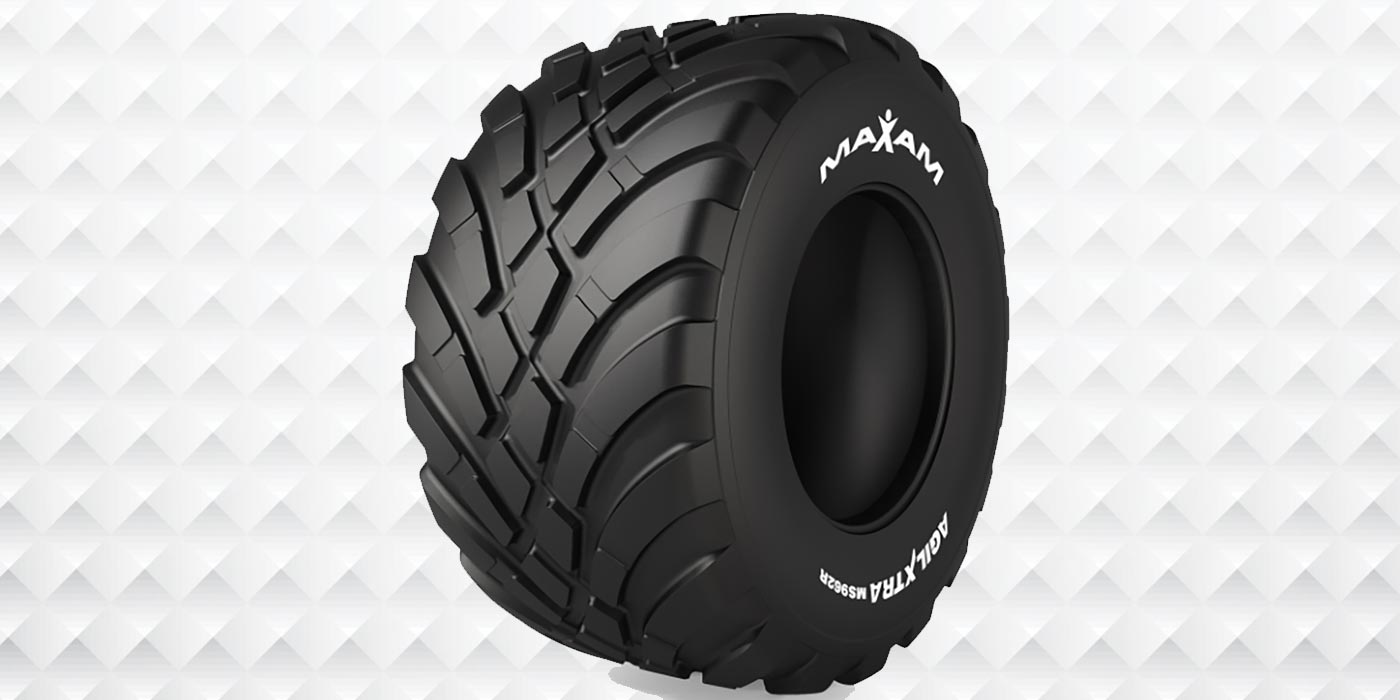Off-road enthusiasts know mud-terrain tires as the way to go when traversing through mud, gripping rocks, digging into sand or exploring other treacherous terrains.
But with consistently aggressive styling, this small segment of the light truck tire market continues to grow, becoming more and more a signature of the explorer lifestyle.
“Today’s light truck owner is selecting their tread pattern as much for appearance as performance,” said Michael Mathis, president of Atturo Tire. “While there remain use-based buyers, the driving force in the growth of the LT market has been the truck owner’s desire to install a larger tire with a more aggressive tread pattern and sidewall design.”
With an increase in mainstream consumers wanting to upgrade their tires to a more rugged look, tire dealers must familiarize themselves and their staffs with this segment. Knowing the advantages and drawbacks of mud-terrain tires can help dealers advise customers on choosing the right tire for their intended use.
Define Your Customer and Their Needs
If a customer comes into your shop wanting mud-terrain tires, it is essential to ask questions about their driving habits and intended use.
“They (dealers) need to be very diligent during the discovery process and fully understand the customer’s expectations,” said Rick Phillips, vice president of sales for Triangle Tire USA. “At the same time, they need to educate the customer on the product they are purchasing or want to purchase.”
The first step to figuring out what a customer needs is to ask about their lifestyle, what they want out of the tire and how they plan to use it, said David Shelton, director of industry relations and communication for Giti Tire (USA) Ltd. Gathering information about how they’ll use the tires most often and if they’ve been an MT tire user in the past helps define what type of customer they are in this segment.
For example, you have the enthusiast, who uses their vehicle as their hobby and may be involved in an off-roading club. Beyond enthusiasts, you’ll find outdoor/adventure seekers – usually the campers, hikers, mountain bikers, hunters and ATV owners – who use their vehicles to get them out of town and into the elements.
Then, you have the more practical users in this segment: “site workers” with many in construction, logging, drilling, farming or landscaping fields that use MTs on their personal or company car.
And finally, there’s the appearance/image customer. Sure, they may have never been off-roading – except maybe hitting a pothole – but they “want the biggest, baddest truck with the gnarliest (most aggressive tread and sidewall treatment), and biggest tires, with the accompanying lift kit as their vehicle,” Shelton says.
“There is a huge opportunity with this group, as they have the money and want to spend it,” he says. “However, be prepared, for each of these customer types. Once you are aware of what the consumer is after, you need to make sure of what they are willing to give up to get what they expect.”
Weigh the Benefits and Drawbacks
Many customers seeking that aggressive styling may not know the advantages and shortcomings mud-terrain tires bring to the table. So, your job is to educate them on it.
While an all-terrain tire is used primarily for 20 percent off-road driving and 80 percent highway driving, it’s cousin – the MT tire – is designed for the driver that may spend 50 percent of their time off-road and is willing to sacrifice highway performance for off-road traction and durability, said Triangle’s Phillips.
While MTs can virtually get you anywhere – and back – Giti’s Shelton says, vehicles’ suspensions are commonly lifted to accommodate these heavier tires. This can give a more unstable feeling to the ride and make it more difficult for drivers to get in and out of their vehicles.
MTs also generally lack the fuel economy – sometimes a 20-30% reduction from your standard all-terrain tire – because of their rolling resistance, said Steve Hutchinson, director of sales and marketing at Pro Comp Tire. They’re also a heavier tire and lack road manners. MTs make a lot of noise since they’re designed with open and larger tread lugs that allow mud to escape, Hutchinson said.
“You get a bump sound from the pattern itself,” he said. “You can hear them (MT tires) coming. That’s because they’re skipping because there’s so much open area in the tire… MTs are the loudest tire you can mount on a vehicle that you can use on the road… you just have to accept that.”
But in looks, the MT’s aggressive styling compared to an AT wins out, said Andrew Hoit, vice president of sales and marketing for Tireco. MTs also commonly feature a heavier duty 3-ply sidewall for added strength and puncture resistance.
“An all-terrain tire is a tire designed to perform well in ‘most’ conditions, but will sacrifice some performance in extreme conditions, like mud,” Hoit said. “An all-terrain pattern is appropriate for applications 99% of the time but the majority of mud-terrain purchasers buy them for the aggressive, cool looks [even though] 95% of off-road enthusiasts choose to run mud tires but don’t regularly use the tires in muddy conditions.”
If they are not ready for the trade-offs, Giti’s Shelton said, ease them back to the all-terrain products to make sure they return a happy customer, and bring their friends, too.
Catering to Today’s Market
With looks defining purchasing decisions for many of today’s mud-terrain tire buyers, sidewalls sell, said Atturo’s Mathis. And an MTs looks have become a lifestyle statement for the driver, said Brian Phillips, Maxxis International’s marketing supervisor.
“Most of our customers use mud terrains on Jeeps, pickup trucks or sometimes even SUVs,” Phillips said. “MT (tires) used to be bought by people that need mud performance, but it has since evolved.”
And dealers can leverage the enthusiast market by getting engaged and building a rapport with local off-roaders so that they maintain business not only from the customer but also in the off-road segment, Hoit says.
Local Jeep 4×4 clubs are a good way to attract business, Hutchinson said. But most importantly, as a dealer, you have to commit to the market.
“You can’t puddle around in it,” Hutchinson said. “There’s a lot of light truck retailers out there… you can’t play on the fringes. But if you jump in and create a following locally, you can do very well.”
Dealer’s Checklist for Customer Care
- Enthusiasts often “air down” for off-road driving but forget to air up when they leave the trail or they’ll run the risk of underinflation, which can lead to tire failure.
- Rotate your tires, especially with tires have deeper treads. You can avoid irregular tread wear – such as heel-to-toe wear in the non-drive axle – by staying on a regular rotation schedule.
- Rotate your tires every oil change.
- It is not uncommon for vehicles running mud terrain tires to also have lifted suspensions to accommodate larger tires. Therefore, the suspensions – including alignment, ball joints and tire rods – need to be well maintained.
- Routine checks for cuts and punctures are a must with off-road excursions opening drivers up to damage from just about anything.
Questions to Ask During an MT Tire Sale
- What is the customer looking for?
- What vehicle do they drive and how do they use it?
- How do they use it most often?
- What do they expect from it?
- Is this their first set of mud tires, or are they replacing another set?
- If replacing another set, what did they like about the previous set? What did they not like about the previous set?
















